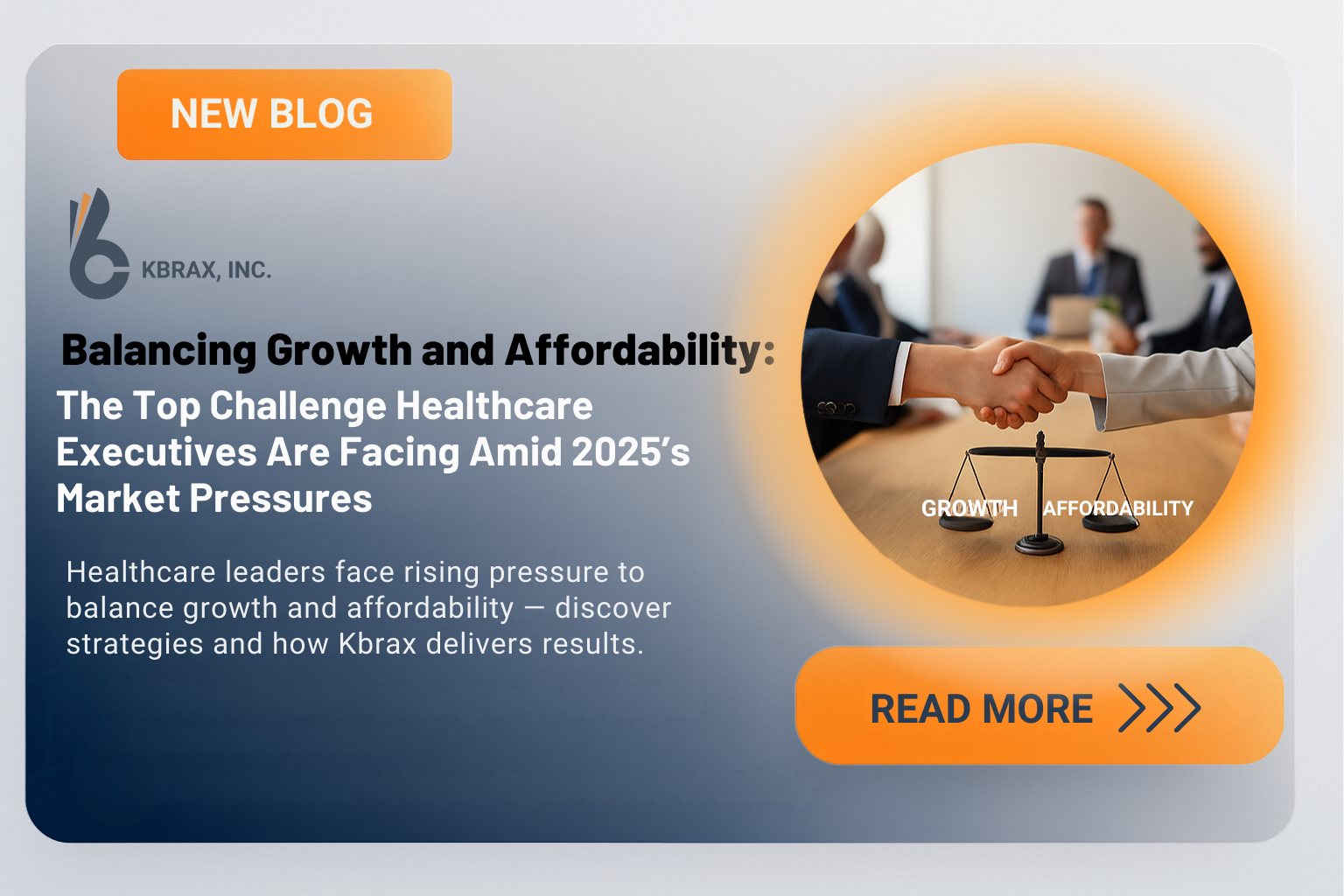
This year, healthcare executives are navigating one of the most complex balancing acts in recent history: achieving growth while keeping care affordable.
According to Deloitte’s 2025 U.S. Healthcare Outlook:
🔶 65% are prioritizing new growth strategies to increase revenue
🔶 46% are focused on improving consumer affordability
The stakes are high. Rising costs, regulatory demands, and shifting consumer expectations are reshaping how leaders operate — and how quickly they must adapt:
🔶 Medical costs in the group market are projected to rise 8% in 2025 (PwC)
🔶 Regulatory shifts and pricing transparency rules are adding operational complexity
🔶 Consumers now expect digital, seamless, and affordable care as the norm
This isn’t just a strategic choice — it’s a survival decision. The executives who find a way to deliver both growth and affordability will set the pace for the future of healthcare.
The Dual Challenge for Healthcare Leaders
Growth strategies often mean investing in new service lines, partnerships, or technology — but these require capital at a time when cost pressures are intense. On the other side, making care more affordable often means tighter margins, which can limit growth investments.
Executives are asking:
🔶 How do we expand without pricing ourselves out of the market?
🔶 How do we improve efficiency without sacrificing quality?
🔶 How do we deliver value when patient expectations are rising faster than budgets?
How Healthcare Leaders Are Tackling Growth and Affordability
From our conversations with payers, health plans, and provider networks, a few common approaches are emerging:
🔶 Data-driven decision-making: Leveraging real-time healthcare analytics to pinpoint inefficiencies that increase costs or reduce revenue.
🔶 Care coordination investments: Closing care gaps earlier and improving patient navigation to avoid unnecessary utilization.
🔶 Operational redesign: Streamlining claims, member engagement, and referral processes to increase speed and reduce overhead.
🔶 Strategic partnerships: Working with healthcare technology providers and community organizations to expand reach without heavy infrastructure spending.
Real-World Example: Driving Results with Kbrax
One health system using Kbrax’s CompleteCarePlatform achieved measurable results in just weeks:
🔶 27% reduction in avoidable ER visits within 90 days
🔶 Time to primary care follow-up cut from 34 days to 13 days
🔶Post-acute engagement increased from 11% to over 50%
🔶 Significant decrease in unnecessary hospital admissions within 60 days
By combining real-time insights with proactive member engagement, they improved both cost efficiency and patient outcomes — proving that growth and affordability can work together.
Where Kbrax Fits in the Growth–Affordability Equation
While every organization’s challenges are unique, the common thread is the need for efficiency without compromise. Kbrax helps by:
🔶 Streamlining care coordination across the member journey
🔶 Delivering actionable insights to support smarter, faster decisions
🔶 Reducing administrative burdens that inflate costs
🔶 Improving patient and member experiences — key drivers for retention and growth
The Bottom Line for Healthcare Executives
Healthcare growth and affordability don’t have to be trade-offs. The organizations that will thrive in 2025 are those that act now — integrating technology, rethinking workflows, and leveraging real-time healthcare data to deliver both.
The market is moving fast. The leaders who address this challenge today will be the ones setting the pace tomorrow.
